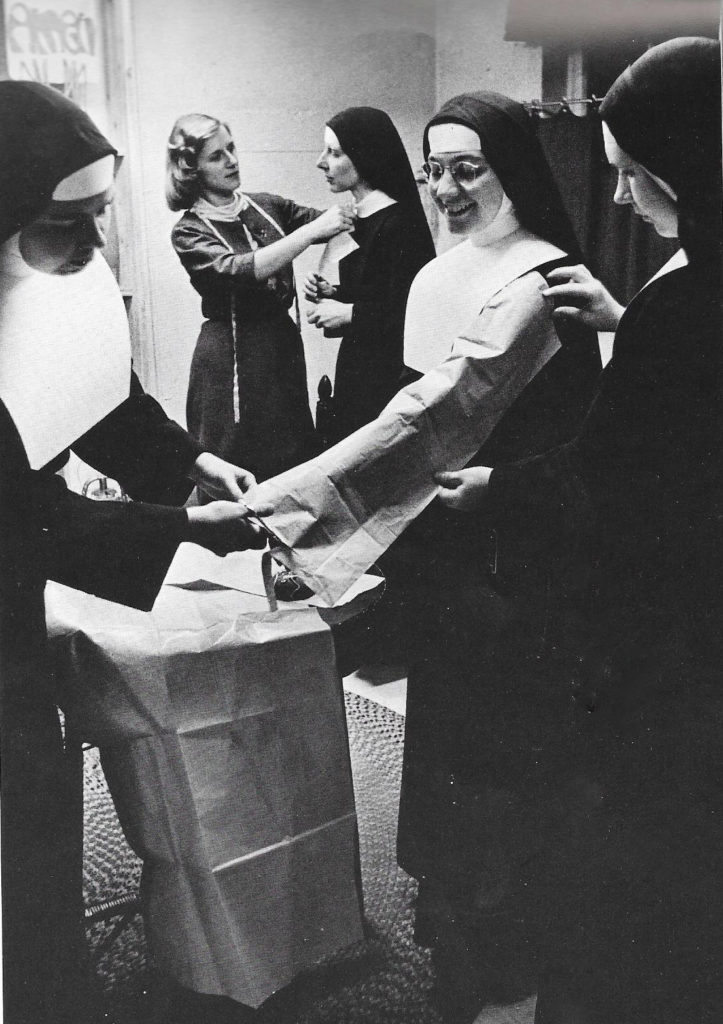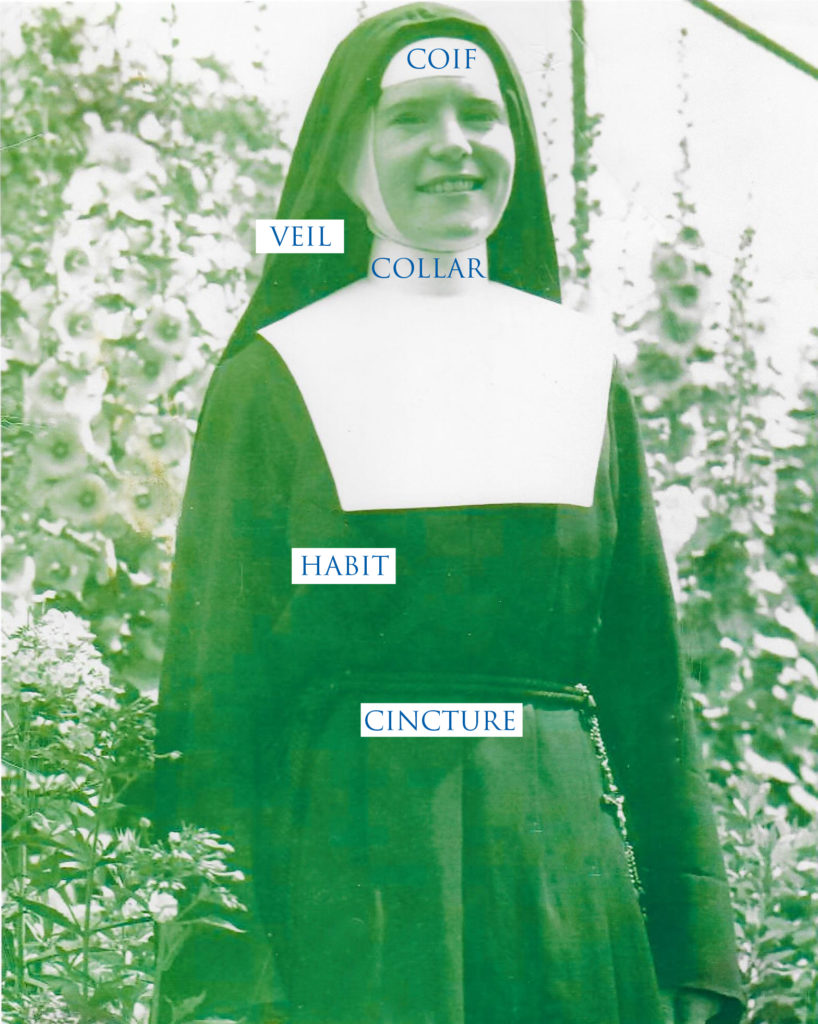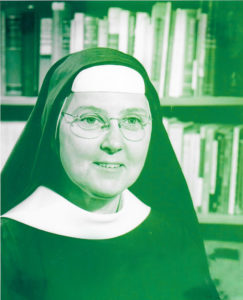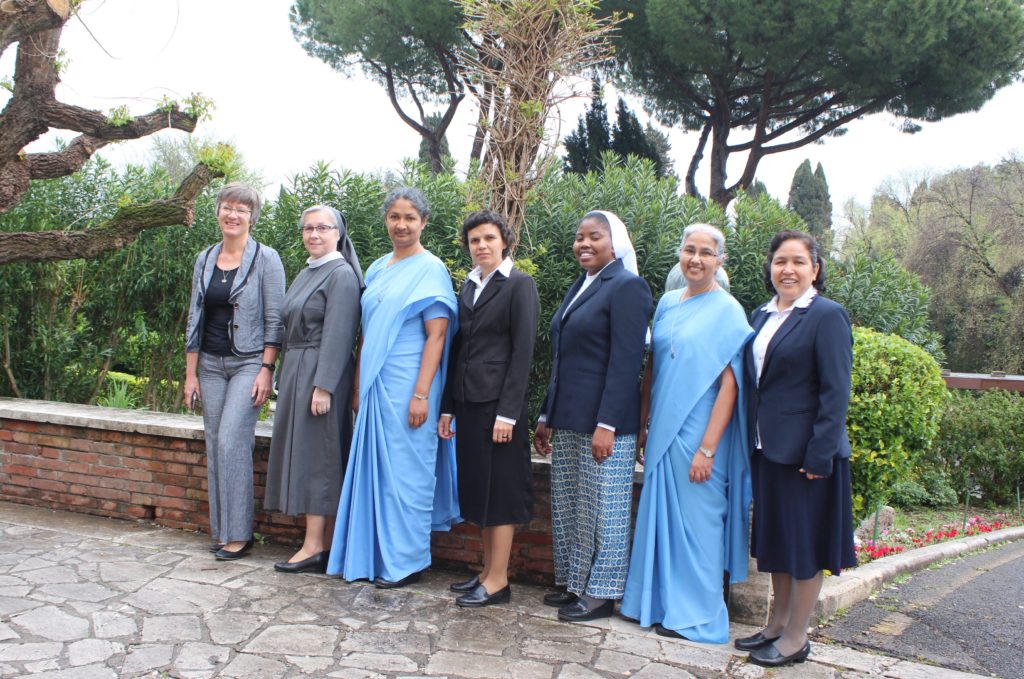Salvatorian Sisters call for a change in habit
Picture this: it’s 1960 and you’re out and about with your mom. Out of the corner of your eye, you see a woman wearing a black veil and long black dress that brushes the floor. Almost subconsciously you step aside to give her a large berth, almost in awe. You think to yourself, “Whoa, a nun outside of a classroom. Now I’ve seen everything.”

Before Vatican II, a sister dressed in habit doing something as ordinary as running errands was surprising to people, especially little kids. The thought was similar to your elementary school teacher living anywhere else, but at school. Sisters couldn’t be normal, not when they dressed so differently from the rest of the world.
This thought eventually started popping into sisters’ minds as well. How can I serve the community I live in, if people think I’m so different from them? How can I interact with these folks if the way I’m dressed keeps me at a mysterious or even fearful distance?
Leading up to Vatican II, the habit Salvatorian Sisters wore followed strict guidelines laid out in the congregation’s 1929 Constitution.
- The religious garb consists of a habit, a cincture, a coif with a forehead band, a collar and a veil.
- The habit, cincture, and veil must be of black wool, the coif with the forehead band and the collar shall be white.
- The habit shall have no sewed plaits. The sleeves are without special cut, and sewed in plain on the shoulders without a gathering; the width of the lower sleeve shall be about 16 in.
- The cincture of the Sisters shall have four knots which should remind them of the three vows of poverty, chastity and obedience and of the apostolate, in which, within the boundaries of their holy vocation, they shall participate. On the cincture the Sisters, as well as the novices, wear a rosary.

As the 1960s world changed around them, more and more sisters began to suspect that these strict guidelines alienated them from the “real world,” while others continued to support the traditional look described above. Actually, the idea to modify the habit was largely inspired by Pope Pius XII in the 1950s. He suggested that sisters modify their dress in the interest of hygiene and common sense.

Changes that led to Salvatorian Sisters having the option to don contemporary clothing were gradual. They began with the Generalate allowing a switch from the traditional collar that required weekly starching and ironing to a low-maintenance neck piece. When it wasn’t enough to satisfy sisters looking for a change, they continued raising the issue with the Generalate. Dress length shortened along with the veil, then the veil shortened even more, and a coif was no longer required. Eventually all the small changes added up and by 1972 a new resolution regarding the habit was established.
Various forms of dress are acceptable
- The traditional long habit with the veil and coif.
- The modified habit without the coif.
- The shortened form of the long habit.
- Contemporary clothing with special permission from the Provincial Team.
By the time the new Rule of Life was approved in 1985, Salvatorian Sisters, not only in the USA but also around the world, were adapting what the Rule described as “simple garb” in a variety ways. Apostolic engagement with cultures vastly different from one another soon resulted in a variety of “Salvatorian habits.” The 2018 photo of the SDS International Generalate gives a glimpse of the diversity that exists today. While leading all Salvatorian Sisters from our motherhouse in Rome, these sisters continue to dress in the traditions of their home provinces: Colombia, Brazil, Democratic Republic of the Congo, Poland, India and Austria.

Our 125 Year Celebration
As we look back on our 125th anniversary of coming to the USA, we invite you to reminisce with us. We've launched all 5 time lines with historical milestones and stories that bring to life the experiences of our sisters who came before us.
Era 1: 1895-1920
Responding to Immigrant Needs
The missionary response of hearty immigrant women religious characterizes the first 25 years of Salvatorian Sisters’ presence in the United States ...
Era 2: 1920-1950
Expanding in an “American” Church
By 1920, life for a Salvatorian Sister in the USA was radically different than it had been 25 years earlier. World War I ....
Era 3: 1950-1970
Embracing Renewal
Bob Dylan’s 1964 classic, The Times They Are A Changing, captures the high energy of this era. Change was afoot both outside and inside the Salvatorian convent walls...
Era 4: 1970-2000
Building Collaboration
Events of the mid-1960s renewed the collaborative energy that had always characterized Salvatorian life. Cloistered living ...
Era 5: 2000-2020
Searching for New Footing in a Changing World
When the new millennium arrived on January 1, 2000, Salvatorian Sisters were already five years into our second century on USA soil. Our ...
